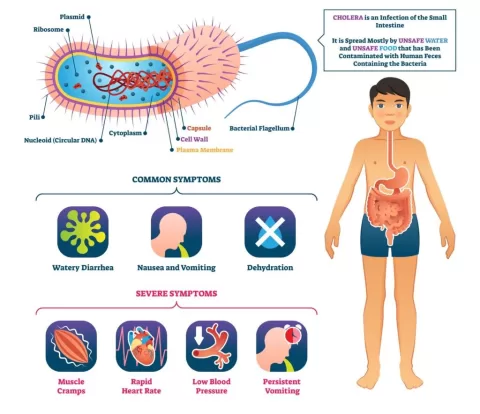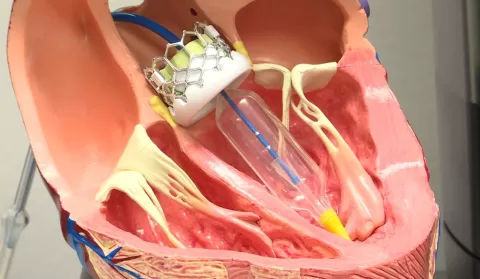Myasthenia gravis, an autoimmune disease characterized by debilitating muscle weakness, significantly impacts the lives of many individuals. The underlying cause lies in the body’s production of autoantibodies, which mistakenly attack the acetylcholine receptors essential for proper muscle contraction. This miscommunication between the nerves and muscles leads to fatigue that can affect various muscle groups, including those responsible for eye movements and facial expressions. Researchers are delving into the complexities of myasthenia gravis, exploring how personalized therapies could provide tailored treatment options based on individual patients’ unique antibody profiles. As advancements are made in understanding these mechanisms, the hope is to improve the lives of those affected by this challenging condition.
Myasthenia gravis, often simply referred to as MG, is a complex neuromuscular disorder that manifests through severe muscular fatigue and weakness. As part of its intricate pathology, the immune system produces autoantibodies that disrupt crucial communication between nerves and muscles. This condition can result in varying degrees of muscle impairment, making everyday tasks increasingly difficult for those affected. Ongoing research is focused on uncovering the diverse interactions between immune proteins and muscle receptors, aiming to pave the way for innovative and tailored treatment strategies. Understanding the diverse mechanisms underlying MG will be vital for developing effective personalized therapies that address individual patient needs.
Understanding Myasthenia Gravis: Causes and Symptoms
Myasthenia gravis (MG) is an autoimmune disease characterized by muscle weakness that can significantly impact daily functioning. This condition arises when the body’s immune system mistakenly produces autoantibodies that target acetylcholine receptors (AChRs), which are crucial for muscle contraction. In a healthy individual, acetylcholine binds to these receptors, allowing for muscle movement. However, in people with myasthenia gravis, the antibodies disrupt this binding process, leading to varying degrees of motor dysfunction. Common symptoms include difficulty in eye movement, facial expression, and limb strength, which often worsens with exertion.
The miscommunication between nerves and muscles is the hallmark of myasthenia gravis, indicating a dysfunction at the neuromuscular junction. The prevalence of muscle weakness can fluctuate throughout the day, with individuals experiencing periods of increased fatigue and weakness. As the understanding of this autoimmune disease expands, researchers are uncovering the diverse mechanisms at play that influence patient responses to treatment. This variability in patient experiences emphasizes the need for comprehensive diagnostic evaluations and tailored therapeutic strategies.
Autoantibodies in Myasthenia Gravis: Mechanisms of Action
Research into myasthenia gravis has revealed that autoantibodies can interfere with muscle function through multiple mechanisms. Some antibodies block the binding of acetylcholine to its receptors, effectively nullifying the muscle activation process. Others may activate the complement pathway, leading to receptor damage and further destabilization of neuromuscular communication. These findings illustrate the complexity of how autoantibodies contribute to muscle weakness and suggest that myasthenia gravis should be viewed as a spectrum of immune responses rather than a one-size-fits-all disorder.
One of the pivotal studies conducted at UC San Diego employed cryo-electron microscopy to unravel these intricate interactions. By analyzing samples from different patients, researchers identified unique autoantibody binding sites on the AChR. This variability not only helps clarify the diverse pathophysiological landscape of myasthenia gravis but also indicates why certain treatment responses can vary greatly among individuals with the same diagnosis. Such insights lay the foundation for the development of targeted therapies aimed at specific autoantibody interactions.
Recent Advances in Personalized Therapies for Myasthenia Gravis
The evolution of treatment options for myasthenia gravis is shifting towards more personalized medicine, reflecting advances in our understanding of the disease’s underlying mechanisms. Traditional treatments typically involve general immunosuppressants and acetylcholinesterase inhibitors; however, the recent identification of patient-specific autoantibody profiles opens the door for more tailored interventions. Researchers are optimistic that future therapies can specifically target the pathways disrupted by these autoantibodies, leading to improved patient outcomes.
Ongoing studies indicate that personalized therapies could revolutionize how myasthenia gravis is managed. Instead of administering a blanket treatment for all patients, healthcare providers may soon be able to customize their approach based on individual antibody interactions with the AChR. This means that future treatments for myasthenia gravis may not only alleviate symptoms more effectively but also minimize side effects associated with traditional immunosuppressive therapies. Such advancements underscore the importance of personalized diagnostics and the exciting potential for more effective therapeutic strategies.
The Role of Acetylcholine Receptors in Muscle Function
Acetylcholine receptors are integral to the functioning of skeletal muscles, serving as the critical interface for neuromuscular communication. When functioning correctly, these receptors facilitate the transmission of signals from the nerves to the muscle fibers, triggering contraction and enabling movement. In individuals with myasthenia gravis, the presence of autoantibodies can severely impair this process by blocking, altering, or damaging these receptors, leading to significant muscle weakness.
The structural integrity and functionality of AChRs are crucial for normal physical activities. Laboratory studies have provided insights into how pathogenic antibodies interfere with receptor activity, showcasing variations based on individual patient profiles. By further elucidating the complex interactions between autoantibodies and the AChR, researchers aim to enhance the understanding of myasthenia gravis and develop interventions that restore normal muscle function.
Collaboration in Myasthenia Gravis Research: A Team Science Approach
The complexity of myasthenia gravis research necessitates a collaborative approach to gain deeper insights into this multifaceted autoimmune disease. Recent studies involving cooperative efforts between institutions, such as the collaboration between UC San Diego and Yale University, have proven effective in advancing the understanding of how specific autoantibodies interact with acetylcholine receptors. By combining different areas of expertise—from molecular studies to clinical assessments—researchers can uncover new therapeutic avenues that could lead to improved management strategies for patients.
Adopting a team science methodology not only accelerates discoveries but also enhances the ability to develop personalized medicine approaches for myasthenia gravis. As researchers share patient data and integrate findings from functional assays with high-resolution imaging techniques, the potential to tailor therapies based on unique patient profiles grows significantly. Such collaborations are at the forefront of transformative research that could ultimately change how autoimmune diseases are understood and treated.
Future Outlook: Hope for Myasthenia Gravis Patients
The future for patients with myasthenia gravis looks promising, particularly with the potential for advancements in personalized therapies. As researchers delve deeper into the mechanisms of autoantibody action and their effects on acetylcholine receptors, there is hope for developing more effective treatments that address the unique challenges faced by each patient. By targeting the specific interactions between autoantibodies and AChRs, healthcare providers can offer tailored therapies that could lead to better outcomes and improved quality of life.
Moreover, the ongoing research efforts highlight a growing awareness of the importance of individualized treatment approaches in managing autoimmune diseases. As the field of myasthenia gravis research advances, there is an expectation that new therapeutic strategies will emerge, minimizing reliance on broad-spectrum immunosuppressants and maximizing efficacy through personalized interventions. This not only brings hope to those currently affected by myasthenia gravis but also paves the way for innovative strategies in treating other autoimmune diseases.
Challenges in Diagnosing Myasthenia Gravis
Diagnosing myasthenia gravis poses unique challenges due to its varied symptoms and the potential overlap with other neurological disorders. Patients often present with muscle weakness, which can be mistaken for fatigue associated with other conditions. As such, a comprehensive diagnostic approach is essential for accurate identification. Neurologists often rely on a combination of clinical evaluations, serological tests to identify autoantibodies, and electrophysiological studies to confirm the diagnosis of myasthenia gravis.
The complexity of autoimmune disease presentations means that timely and accurate diagnosis is critical to enhance treatment efficacy and patient care. Advances in diagnostic techniques, including assays that detect specific autoantibodies against AChRs, have improved the capacity to distinguish myasthenia gravis from other neuromuscular disorders. Continued education for healthcare providers about the nuances of autoimmune diseases and the importance of prompt diagnosis can lead to better outcomes for patients.
Impact of Lifestyle on Myasthenia Gravis
Lifestyle choices play a crucial role in managing myasthenia gravis symptoms and overall health. Patients are often advised to engage in light to moderate exercise, as excessive physical activity can exacerbate muscle weakness. Understanding personal limits and pacing activities throughout the day are essential strategies for individuals living with this autoimmune disease. A well-balanced diet and good sleep hygiene also contribute positively to managing symptoms and maintaining muscle function.
Additionally, awareness of emotional and psychological well-being is vital for those dealing with chronic conditions like myasthenia gravis. Support groups and mental health resources can provide significant benefits to patients as they navigate their diagnosis and treatment journey. By prioritizing lifestyle modifications and emotional health, individuals with myasthenia gravis can better manage their symptoms and improve their quality of life.
Current Treatments for Myasthenia Gravis
The current treatment landscape for myasthenia gravis is diverse and includes a variety of medications aimed at enhancing muscle function and modulating the immune response. Anticholinesterase medications, for example, work by increasing the availability of acetylcholine at the neuromuscular junction, thus counteracting muscle weakness. Immunosuppressants like corticosteroids and newer biologic therapies are often employed to reduce the production of autoantibodies that contribute to the disease’s pathology.
Despite the availability of these therapies, the effectiveness can vary widely among patients due to the complex immunological underpinnings of myasthenia gravis. This variability underscores the importance of ongoing clinical research aimed at identifying biomarkers that can predict treatment outcomes and guide personalized treatment plans. As researchers learn more about how different autoantibodies affect receptor function, there is hope that future treatments will be more targeted and effective for individuals afflicted with this condition.
Frequently Asked Questions
What is myasthenia gravis and how does it relate to autoimmune diseases?
Myasthenia gravis is an autoimmune disease characterized by muscle weakness resulting from the immune system mistakenly producing autoantibodies that target acetylcholine receptors (AChRs). This disruption impedes communication between nerves and muscles essential for muscle contraction.
How do autoantibodies affect the function of acetylcholine receptors in myasthenia gravis?
In myasthenia gravis, autoantibodies bind to the acetylcholine receptors, blocking the normal binding of acetylcholine, which is crucial for muscle contractions. This interference can lead to various muscle weakness symptoms associated with the disease.
What are the common symptoms associated with muscle weakness in myasthenia gravis?
Individuals with myasthenia gravis often experience muscle weakness that can affect the eyes, face, and limbs. Symptoms may include difficulty in blinking, smiling, or even moving certain body parts, significantly impacting daily activities.
How do personalized therapies play a role in treating myasthenia gravis?
Research indicates that myasthenia gravis may arise from different underlying mechanisms in individuals, suggesting that personalized therapies targeting specific autoantibody interactions could improve treatment outcomes compared to standard immunosuppressive therapies.
What recent findings enhance our understanding of the mechanisms behind myasthenia gravis?
Recent studies using cryo-electron microscopy revealed that autoantibodies from myasthenia gravis patients bind to diverse regions of acetylcholine receptors, disrupting their function via various mechanisms. This discovery challenges previous beliefs and may inform more effective treatments.
Can myasthenia gravis be effectively managed with medications?
Medications for managing myasthenia gravis typically aim to enhance acetylcholine levels and suppress the immune response. However, the effectiveness of these treatments can vary among patients due to the distinct ways autoantibodies affect AChRs.
What is the significance of research collaborations in understanding myasthenia gravis?
Collaborative research efforts, such as those between UC San Diego and Yale University, are crucial in advancing our knowledge of myasthenia gravis. They combine patient sample analysis with high-resolution imaging techniques, paving the way for innovative and targeted treatments.
How does the immune system contribute to muscle weakness in myasthenia gravis?
In myasthenia gravis, the immune system incorrectly produces autoantibodies that attack acetylcholine receptors, leading to disrupted nerve-muscle communication and consequent muscle weakness. Understanding this autoimmune response is vital for developing effective therapies.
What role does acetylcholine play in muscle contraction, especially in the context of myasthenia gravis?
Acetylcholine is a neurotransmitter that binds to acetylcholine receptors on skeletal muscle cells, triggering muscle contraction. In myasthenia gravis, the binding is impaired due to autoantibody interference, which results in muscle weakness.
What ongoing research is being done to find better treatments for myasthenia gravis?
Ongoing research aims to elucidate the various mechanisms by which autoantibodies disrupt acetylcholine receptor function in myasthenia gravis. This could lead to targeted therapies that address specific antibody interactions, improving management and outcomes for patients.
| Key Points |
|---|
| Myasthenia gravis is an autoimmune disease causing muscle weakness affecting movements like blinking and smiling. |
| The disease results from miscommunication between nerves and muscles, specifically autoantibodies targeting acetylcholine receptors (AChRs). |
| Patients may respond differently to treatments due to the distinct underlying mechanisms of the disease in different individuals. |
| Advanced techniques like cryo-electron microscopy have helped researchers understand how autoantibodies disrupt AChR functionality. |
| Future treatments may focus on targeting specific antibody interactions rather than general immunosuppression. |
Summary
Myasthenia gravis is an autoimmune disease that leads to muscle weakness affecting various voluntary muscle functions. This condition results from the immune system producing autoantibodies that target acetylcholine receptors, essential for muscle contractions. Recent research highlights the complexity of these autoantibodies and suggests that tailored treatments focusing on individual antibody interactions may enhance treatment outcomes. Understanding myasthenia gravis at a molecular level opens up new avenues for personalized therapies, demonstrating significant progress in the fight against this challenging illness.
The content provided on this blog (e.g., symptom descriptions, health tips, or general advice) is for informational purposes only and is not a substitute for professional medical advice, diagnosis, or treatment. Always seek the guidance of your physician or other qualified healthcare provider with any questions you may have regarding a medical condition. Never disregard professional medical advice or delay seeking it because of something you have read on this website. If you believe you may have a medical emergency, call your doctor or emergency services immediately. Reliance on any information provided by this blog is solely at your own risk.







